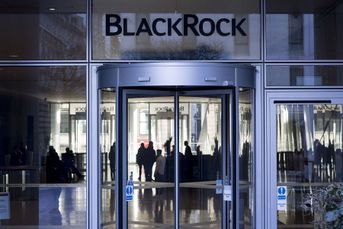BofA said to shift derivatives from Merrill to bank
Bank of America Corp., hit by a credit downgrade last month, has moved derivatives from its Merrill Lynch unit to a subsidiary flush with insured deposits, according to sources with direct knowledge of the situation
Bank of America Corp., hit by a credit downgrade last month, has moved derivatives from its Merrill Lynch unit to a subsidiary flush with insured deposits, according to sources with direct knowledge of the situation.
The Federal Reserve Board and the Federal Deposit Insurance Corp. disagree over the transfers, which are being requested by counterparties, said the sources, who asked not to be identified, as they weren’t authorized to speak publicly.
The Fed has signaled that it favors moving the derivatives to give relief to the bank holding company, while the FDIC, which would have to pay off depositors in the event of a bank failure, is objecting, the sources said.
The bank doesn’t believe regulatory approval is needed, said sources with knowledge of its position.
HOW TO PROTECT DEPOSITS
Three years after taxpayers rescued some of the biggest U.S. lenders, regulators are grappling with how to protect FDIC-insured bank accounts from risks generated by investment-banking operations. BofA, which received a $45 billion bailout, had $1.04 trillion in deposits as of midyear, ranking it second among U.S. firms.
“The concern is that there is always an enormous temptation to dump the losers on the insured institution,” said William Black, professor of economics and law at the University of Missouri-Kansas City, and a former bank regulator. “We should have fairly tight restrictions on that.”
Jerry Dubrowski, a BofA spokes-man, declined to comment on the transfers or the firm’s discussions with regulators.
The company “continues to accommodate the needs of our clients through each of our multiple trading entities, including Bank of America NA,” he wrote in an e-mailed statement, referring to the company’s deposit-taking unit.
Barbara Hagenbaugh, a Fed spokeswoman, said that she couldn’t discuss supervision of specific institutions.
Greg Hernandez, an FDIC spokesman, also declined to comment.
Derivatives are financial instruments used to hedge risks or for speculation. They are derived from stocks, bonds, loans, currencies and commodities, or linked to specific events such as changes in the weather or interest rates.
Keeping such deals separate from FDIC-insured savings has been a cornerstone of U.S. regulation for decades, including last year’s Dodd-Frank overhaul of Wall Street regulation.
BAILOUTS
The legislation gave the FDIC, which liquidates failing banks, expanded powers to dismantle large financial institutions in danger of failing. The agency can borrow from the Treasury Department to finance the biggest lenders’ operations to stem bank runs.
It is required to recoup taxpayer money used during the resolution process through fees on the largest firms.
BofA benefited from two injections of U.S. bailout funds during the financial crisis.
The first, in 2008, included $15 billion for the bank and $10 billion for Merrill Lynch & Co. Inc., which the bank had agreed to buy.
The second round of $20 billion came in January 2009 after Merrill Lynch’s losses in its final quarter as an independent firm surpassed $15 billion, raising doubts about the bank’s stability if the takeover proceeded. The U.S. also offered to guarantee $118 billion of assets held by the combined company, mostly at Merrill.
MOODY’S DOWNGRADE
Moody’s Investors Service downgraded BofA’s long-term credit ratings Sept. 21, cutting both the holding company and the retail bank two notches apiece. The holding company fell to Baa1, the third-lowest investment-grade rank, from A2, while the retail bank declined to A2, from Aa3.
BofA’s rating is now four grades below the one Moody’s assigned to JPMorgan Chase & Co., the biggest U.S. bank by deposits at midyear, and a level below the rating given to Citigroup Inc., the third-biggest. BofA is the only U.S. lender that lacks a rating of A3 or higher among the five firms listed by the Office of the Comptroller of the Currency as having the biggest derivatives books.
The Moody’s downgrade spurred some of Merrill Lynch’s partners to ask that contracts be moved to the retail unit, which has a higher credit rating, according to sources familiar with the transactions. Transferring derivatives also can help the parent company minimize the collateral it must post on contracts and the potential costs of terminating trades after the Moody’s decision, said a source familiar with the matter.
$75 TRILLION
BofA’s holding company — the parent of both the retail bank and the Merrill Lynch securities unit — held almost $75 trillion of derivatives at the end of June, according to data compiled by the Office of the Comptroller of the Currency. About $53 trillion, or 71%, were within Bank of America NA, according to the data, which represent the notional values of the trades.
That compares with JPMorgan’s deposit-taking entity, JPMorgan Chase Bank NA, which contained 99% of the firm’s $79 trillion of notional derivatives, the OCC data show.
Moving derivatives contracts between units of a bank holding company is limited under Section 23A of the Federal Reserve Act, which is designed to prevent a lender’s affiliates from benefiting from its federal subsidy and to protect the bank from excessive risk originating at the nonbank affiliate, said Saule T. Omarova, a law professor at the University of North Carolina School of Law at Chapel Hill.
‘CREATED A FIREWALL’
“Congress doesn’t want a bank’s FDIC insurance and access to the Fed discount window to somehow benefit an affiliate, so they created a firewall,” he said.
The discount window has been open to banks as the lender of last resort since 1914.
As a general rule, as long as transactions involve high-quality assets and don’t exceed certain quantitative limitations, they should be allowed under the Federal Reserve Act, Mr. Omarova said.
In 2009, the Fed granted Section 23A exemptions to the banking arms of Ally Financial Inc., CIT Group Inc., Fifth Third Bancorp, General Electric Co., The Goldman Sachs Group Inc., HSBC Holdings PLC, ING Groep NV, Morgan Stanley and Northern Trust Corp., among others, according to letters posted on the Fed’s website.
The central bank terminated exemptions last year for retail- banking units of Barclays PLC, Citigroup, Deutsche Bank AG, JPMorgan and Royal Bank of Scotland PLC. The Fed also ended an exemption for BofA in March 2010, and in September that year approved a new one.
Section 23A “is among the most important tools that U.S. bank regulators have to protect the safety and soundness of U.S. banks,” Scott Alvarez, the Fed’s general counsel, told Congress in March 2008.
Learn more about reprints and licensing for this article.








